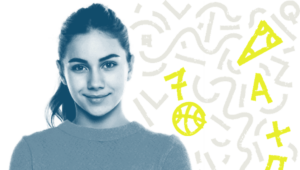EdReform Revived

By Tom Vander Ark and Jeanne Allen
Securing great education opportunities for all leaners at all levels was the originating intent of modern education reform. Animating the movement was a perceived threat to the economy and big gaps in opportunity.
Standards-based reforms sought to set clear high standards, measure progress, build capacity, attack gaps and expand options. With origins in the 1980s, we’ll look back on 1993 to 2015 (the tenure of secretaries Riley, Paige, Spellings and Duncan) as the era of standards-based reform. Most states got on board and passed legislation in the mid-’90s, and the feds followed with bipartisan fervor—but the execution never lived up to the hype.
While there was progress, including thousands of proof points of what’s possible, it was the unintended consequences–including a narrowed curriculum and weeks of time devoted to testing and test prep–that monopolized the education dialog over the last two months. And now, even the proof points of possibility themselves are under attack in many cities.
Outside of education, innovation is sweeping the globe and transforming service delivery. But in U.S., K-12 policymakers are increasingly constraining the supply in order to predict the outcome rather than setting the outcome and allowing the supply to develop to meet all demands.
The Center for Education Reform hosted a forum last week to look back at thirty years of EdReform and consider the path forward—in particular how to revive EdReform by incorporating innovation and opportunity to rapidly improve results.
The conversation between advocates, researchers and policymakers resulted in 10 takeaways—and perhaps an early framework to revive EdReform.
1. Unintended consequences. Rather than embrace innovation and the benefit that can come from taking risks, many leaders promote accountability systems with the unintended consequences of narrowing the curriculum and encouraging teaching for tests. However,
- In most states there was little or no accountability–just regulatory compliance, leaving millions of students in very poor schools.
- In states where options exist, parents have exerted the most powerful form of accountability—school choice (e.g., 289 charter schools in Arizona closed because of weak demand and/or financial distress).
Allowing families the freedom to choose is the most authentic form of accountability.
2. Good measures. Standards raised expectations and measurements pointed out inequity. However,
- School models that raise test scores don’t necessarily change life outcomes,
- Narrow measures of proficiency don’t fully measure a school’s contribution to youth development or the value of a learning opportunity, and
- We’ve created a summative monster that most people resent.
We should be cautious about narrow measures and humble about the potential for unintended consequences.
3. Broader aims. There is strong momentum to adopt broader aims including character strengths and dispositions. However,
- We lack a common lexicon and set of measures for broader aims.
- There is a risk of adopting immature measures and using them in accountability systems.
We should encourage broader aims but be cautious about too quickly using immature measures in formal accountability systems.
4. Innovation. Preference for what is proven ignores that what is proven was once experimental. For example, small schools of choice and programs serving at-risk youth often boost life outcomes. However,
- Support has been sporadic, given weak test scores.
- Hand crafted new schools can be slow and expensive to develop.
There should be spaces and resources for innovations with the potential to boost life outcomes.
5. Real-time feedback. The transition from print to digital made formative assessment nearly ubiquitous—many students and teachers are benefiting from continuous feedback. However,
- It’s still hard to combine formative feedback in ways that inform learning and mastery judgments, but platforms, portfolios and learner profiles are making it easier to store and organize evidence and artifacts of learning.
Learners deserve accurate real-time information about their progress and options.
6. Choice of experiences. Learning opportunities have shifted from school choice to course choice to experience choice, but the EdReform sectors are still focused almost exclusively on the former. It should be about educational choice. However,
- Taking full advantage of options at the unit and experience level will require performance-based funding that follows the student,
- better parent and student information systems that surface and recommend best options to help guide informed choices, and
- advisors (learning Sherpas) that help students and families make good choices will be critical in making effective use of expanded options.
Policy should support informed learner opportunity.
7. Toward competency. The metrics trend toward competency and credentialing, and will help yield solutions for combining formative feedback to make mastery judgments (#5) and a variety of strategies for demonstrating growth in many dimensions (#5). However,
- Despite support from iNACOL, CER, ExelinEd, NMEF and others, progress on competency-based education has been slow because it faces so many barriers (policy, school funding, tradition, HigherEd admissions, etc.)
Learners should show what they know and progress on mastery.
8. Good research. Most studies of choice-based and charter schools show generally positive outcomes. However,
- Results and comparisons are most accurate and helpful within states and cities.
- Research into the nature of school quality is challenging given the challenges of random assignment and weak and narrow measures of success. It takes a long time to measure the impact on life outcomes, which is influenced by many factors
We need more good research that measures the real contribution of programs and schools to student growth and life outcomes.
9. Opportunity. The opportunity to expand these kinds of learning choices and create powerful learning experiences and new learning models improves weekly. However,
- Charter organizations that influence the creation or training of authorizers have become risk averse, and many districts are reluctant to experiment with new models.
New learning models are complex to assemble, and they benefit from inspiration, incubation and intermediation.
10. Important work. We are pursuing broad applied knowledge in a world of narrow assessments. However,
- Developing human beings is a complex undertaking, and there are multiple conceptions of cognitive development and the role of school, but well-intentioned advocates, think tanks and foundations have defined a narrow path for success which is one-dimensional.
There are many pathways to educational and life success—all families should have access to innovation and opportunity.
The EdReform of the last two decades was fueled by a hypothesis that things could be better for all young people—innovation is the new tailwind that now makes that inevitable. It will happen faster and more equitably if we expand opportunity for all learners.
Jeanne Allen is CEO of the Center For Education Reform. Follow them on Twitter: @edreform
Stay in-the-know with all things EdTech and innovations in learning by signing up to receive the weekly Smart Update.






0 Comments
Leave a Comment
Your email address will not be published. All fields are required.